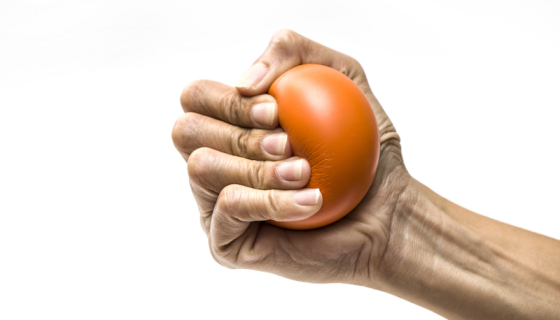
Do you have a shooting wrist pain on the pinky finger side everytime you push down on something? Does it hurt in the same spot to turn your palm up and down? Pinky finger side pain right at the wrist joint may be an indication of a TFCC injury or irritation.
What is a Triangular Fibrocartilage Complex?
TFCC is not Toronto’s professional soccer team (but while we’re at it, GO TFC GO!). TFCC stands for Triangular Fibrocartilage Complex. It’s a complex of things that look a bit like a triangle, parts of which are made up of cartilage. Whomever named it was definitely on point!
Here we will help you gain a better understanding of TFCC anatomy, the common signs and symptoms associated with an injury to this area, and the best places to start if you need to recover from a TFCC injury.
Is the TFCC a Ligament or a Tendon? TFCC Anatomy
As mentioned, TFCC stands for Triangular Fibrocartilage Complex. It is located on the ulnar (pinky) side of your wrist, between your ulna (forearm bone), and your carpals (wrist bones).
Anatomically the TFCC includes a disc, a tendon, and three ligaments. Here’s a few pictures to help visualize:
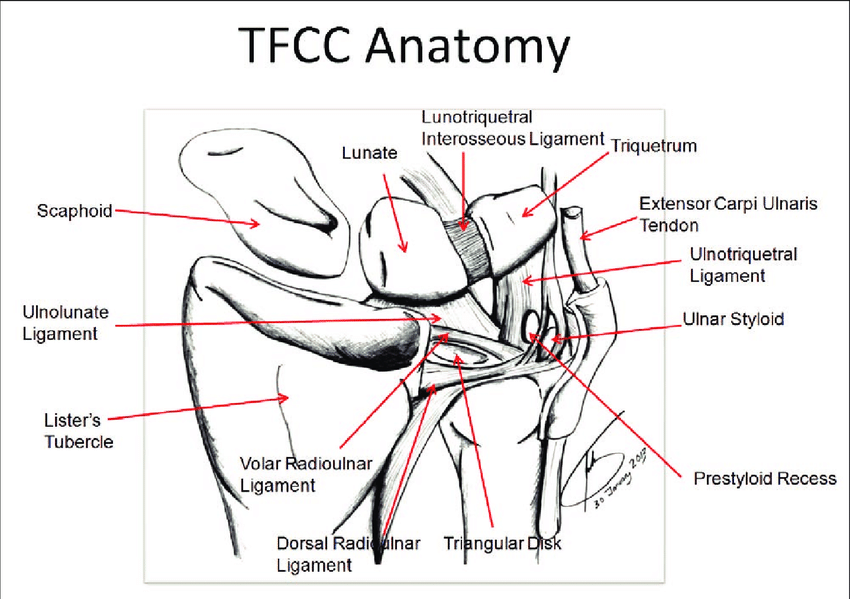
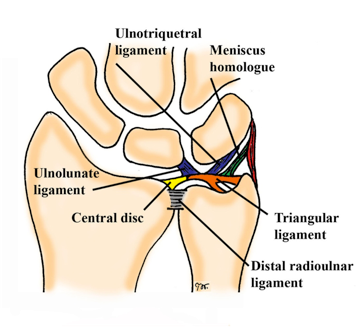
Confused? Yea – that’s fair.
In short, that’s why we just call it a TFCC.
Furthermore, knowing exactly what component of the TFCC is injured if someone presents with this type of wrist pain is essentially impossible clinically. The good news is, it doesn’t fully matter.
If your physiotherapist can determine the TFCC as the main culprit, they’ll be able to help you get better without knowing which exact little structure that’s injured. Keep in mind, this entire complex exists within about 1 square inch (or less) where your forearm meets your hand.
The role of the TFCC is to provide cushioning and stability to the small carpal bones in the wrist. It also keeps the forearm bones (called your radius and ulna) stable during forearm rotation, or grasping tasks.
Cool, cool, cool, right? But how does one even hurt their TFCC? I’m glad you asked. But first, let’s quickly define a few wrist movements:
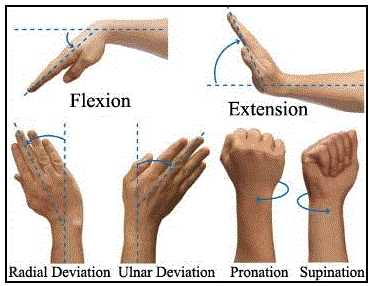
The important ones to note are ‘ulnar deviation’, ‘extension’, and ‘pronation/supination’ (turning palm up and down).
TFCC Injuries
TFCC injuries can happen:
1. Acutely (an abrupt overload in a short period of time)
-
- Also called ‘Type I’ or ‘Traumatic’ tears
- Often caused by falling onto an outstretched hand (especially if in ulnar deviation), or by forced rotation/forced ulnar deviation
- One common example of forced rotation/ulnar deviation is swinging a racquet or bat, see:
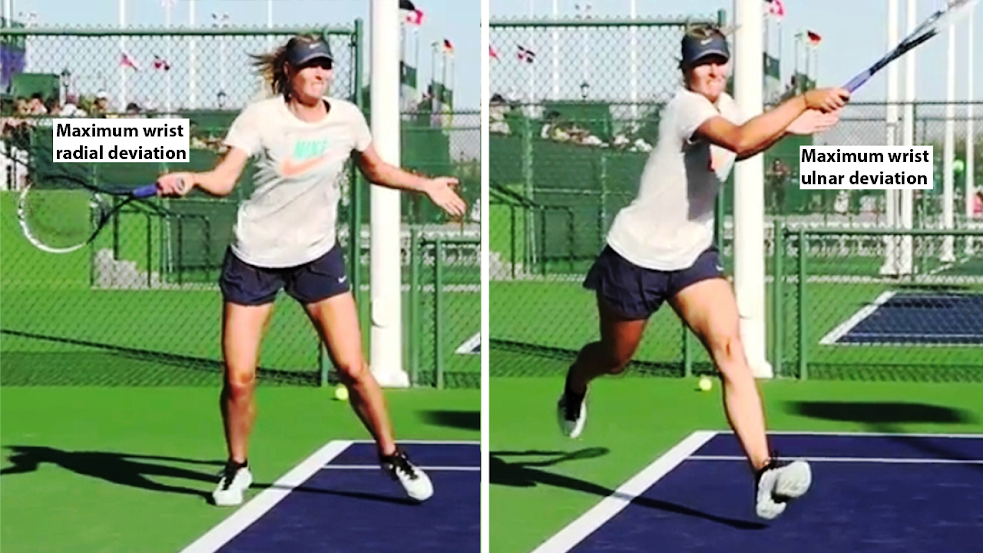
2. Chronically (slowly over time)
-
- Also called ‘Type II’ or ‘degenerative’ tears
- Often age-related, in which the TFCC is slowly compromised over many years
- May be linked to some inflammatory disorders, such as rheumatoid arthritis or gout
Common Signs and Symptoms of TFCC Injury/Irritation
This reference is an excellent resource for understanding TFCC injuries in more detail. That said, here’s the common signs and symptoms of a TFCC injury:
- Ulnar (pinky finger) side wrist pain, which usually worsens with activity
- Weakened grip, especially during rotation tasks
- Clicking of the wrist
- Pain with pushing on something or pushing yourself up from a chair
- Pain with pressing on the TFCC area
In addition to falling or jamming the wrist into extension and/or ulnar deviation, here are some common sports-related mechanisms of pain:
- Repetitive or single forced event of the following:
- Tennis or racquet sport shot with wrist in ulnar deviation
- Hockey shots – more common if puck close to body when shooting
- Baseball – trying to swing and hit and inside pitch
Your physiotherapist may also use some clinical tests to determine if your TFCC is injured. Most commonly:
1. TFCC stress test – compression of the TFCC (push in direction of red arrow in ulnar deviation position):
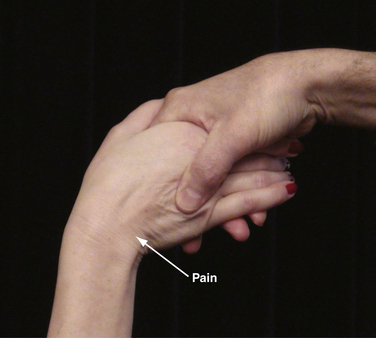
2. The press test – patient tries to lift themself out of a chair using arm rests (pushing down to lift body weight/stand up):
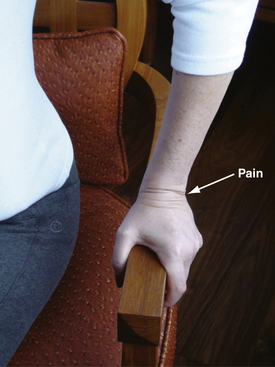
How to Fix a TFCC Injury
See a physiotherapist: a physiotherapist is trained to assess, diagnose, and treat your individual situation. That way, they can provide you with a tailored treatment program of bracing/taping, modalities/hands on therapy, and home exercises designed to get you back to 100% as quickly as possible. In the meantime, read on for some helpful hints.
Relative rest: ideally, try to limit all aggravating activities (like sports or end range loading), and allow time with less significant loads on the TFCC. If it’s not possible to rest enough, or if pain is significant, it’s worthwhile to tape the wrist or get a brace. The tape/brace can help provide stability to the wrist with activity. Alternatively, you can buy a wrist widget on amazon here.
One way to know if tape/bracing will work for you is to do the press test and measure your pain. Then tape the wrist and re-do the press test. If it helps the pain, then consistent bracing/taping will likely be beneficial.
Exercises for TFCC injuries tend to be highly variable based on each individual case, as people present with a large variety of pain/dysfunction/irritability. Therefore, the following exercises are more general and should only be performed if completely pain-free.
Beginner TFCC Injury Exercises
- Ball squeezes
- Get a squishy stress ball and hold it in your hand
- Squeeze it (without pain) and hold for 5-10 seconds. Repeat 10 times. Do 3-5 times per day.
2.Wrist flexion and extension range of motion
-
- Support your forearm, and bend your wrist up and down as far as you can (pain-free). You can use your other hand to help it go further. Repeat 10 times in each direction. Rest. Do 10 more in each direction. Repeat 3 times per day.
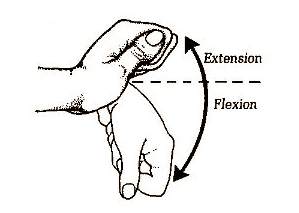
Intermediate TFCC Injury Exercises
- Wrist flexion and extension with dumbbell
- As above, but hold a dumbbell in your hand. Repeat 2 sets of 10 reps. 2 times per day.
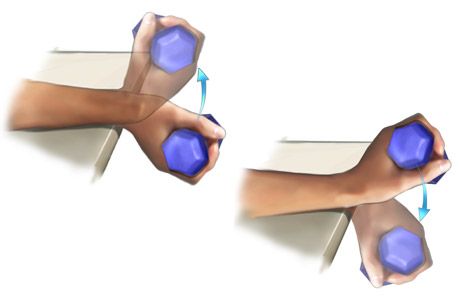
2. Wrist pronation and supination with hammer
-
- Hold a hammer in your hand with your elbow bent to 90 degrees. Rotate the hammer in each direction. Start with 10 times each way. Do 2 sets. Repeat 2 times a day. The closer your hand is to the head of the hammer, the easier it will be.
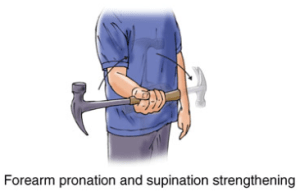
Advanced TFCC Injury Exercise
- Push ups
- Start from your hands and knees if you have to, and try to progress to full push ups (from your toes). Progress to 2 sets of 10 reps. Complete 1-2x/day.
Other advanced exercises would include returning to the difficult components of sports – like swinging a bat or racquet, and slowly progressing back to normal.
Conclusion
That pinky finger side wrist pain you have may quite possibly be a TFCC injury, and hopefully this blog post has helped you understand more about what that even means. Not sure if you have a TFCC injury, or concerned about your wrist pain in general? Want to get out of pain, and back to function?
The best thing to do is to see a physiotherapist and get your individual situation assessed as soon as possible. At Strive Physiotherapy & Performance, we are committed to providing an in-depth assessment to ensure we can work together to find the best plan of action for each individual client.
Call us at 519-895-2020, or use our online booking tool on www.strivept.ca to book an appointment with one of our knowledgeable physiotherapists, and they will be sure to help you understand your injury.
Take good care,
Tyler Allen
Physiotherapist at Strive Physiotherapy & Performance
